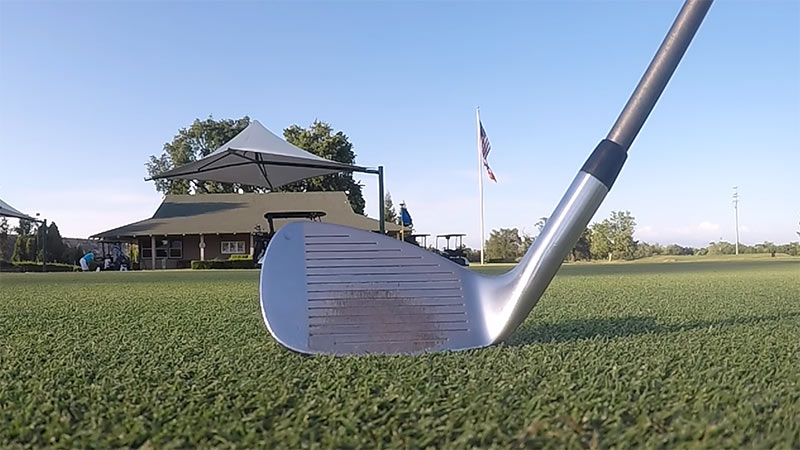Golf, with its myriad technical aspects, can be quite perplexing for beginners and even seasoned players. One such aspect is the “lie angle” of golf clubs, a term that often leaves many wondering.
In this comprehensive guide, we aim to shed light on a crucial aspect of golf club customization: understanding what an “upright golf club” means.
As any golfer knows, the right equipment can make all the difference in your game. The lie angle of your golf club can influence not only the direction of your shots but also the consistency and quality of ball striking.
So, what exactly is an “upright golf club”? How does it impact your swing and ball flight? We’ll explore the nuances, effects, and importance of getting it right in this blog post.
Whether you’re a novice golfer looking to improve your game or an enthusiast seeking to fine-tune your clubs, this guide will provide valuable insights on this essential facet of golf club fitting.
What Does an Upright Golf Club Mean?
An upright golf club refers to the lie angle of the clubhead in relation to the shaft. The lie angle is the angle formed between the sole of the clubhead and the shaft.
When a golf club is described as “upright,” it means that the lie angle is more upright or more vertical than the standard lie angle for that club.
A more upright lie angle can have several effects on a golf shot:
Ball Flight
A more upright lie angle can promote a draw (a shot that curves from right to left for a right-handed golfer) because it allows the club head to approach the ball with a more closed face at impact.
Direction
It can help counteract a slice for some golfers by reducing the tendency of the clubface to open up during the swing.
Ball Contact
It can improve the golfer’s ability to make consistent contact with the ball and the ground, especially if the player is taller and has a more upright posture.
Conversely, if a golf club has a “flatter” lie angle, it means the club head is more horizontal to the ground, and it might promote a fade and could lead to inconsistent ball striking for taller golfers who may need a more golf club upright lie angle to accommodate their posture.
It’s essential for golfers to have their clubs properly fitted to their individual swing characteristics and physical dimensions, which may include adjustments to the lie angle, among other club specifications.
An improperly fitted lie angle can lead to inconsistent ball flight and compromised performance. Golf club fitters can determine the appropriate lie angle for each golfer based on their height, swing mechanics, and other factors.
Upright Golf Clubs Basics
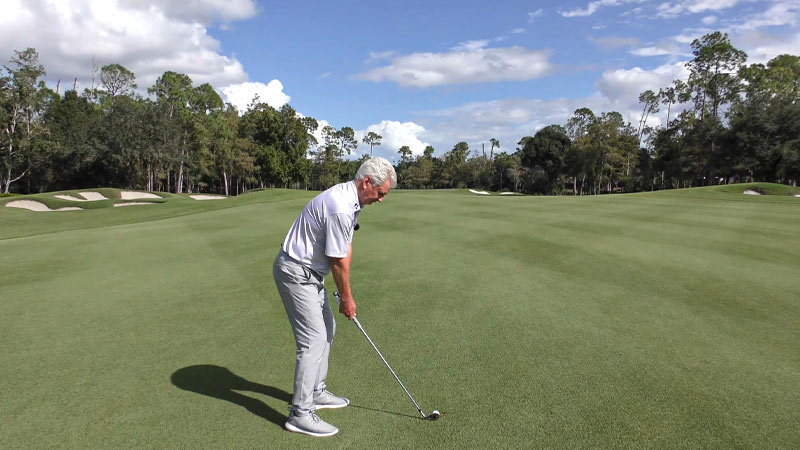
Upright golf clubs refer to golf clubs with a lie angle that is more vertical or upright than the standard lie angle for that type of club. Here are the basics of upright golf clubs:
Lie Angle
The lie angle is the angle formed between the sole of the clubhead and the shaft. A golf club’s upright lie angle means the clubhead is tilted more vertically, while a flatter lie angle means it’s tilted more horizontally.
Effects of Upright Lie Angle
- Promotes a Draw: Upright clubs can promote a draw (a shot that curves from right to left for a right-handed golfer) because they tend to close the clubface at impact.
- Counters a Slice: For golfers who slice the ball (a shot that curves from left to right for a right-handed golfer), upright clubs can help reduce this tendency by minimizing the likelihood of the clubface opening up during the swing.
- Fit for Tall Golfers: Taller golfers often benefit from more upright lie angles to accommodate their taller posture and ensure more consistent ball striking.
Club Fitting
It’s crucial to get properly fitted for golf clubs to match your individual swing characteristics and physical dimensions. Club fitting includes determining the appropriate lie angle for your clubs.
Customization
Golf club manufacturers offer the option to customize the lie angle when purchasing new clubs. You can specify your desired lie angle based on your fitting.
Adjustment
Existing clubs can be adjusted to have a more upright lie angle by bending the hosel of the club. This should be done by a professional club fitter or club technician.
Other Factors
While lie angle is essential, it’s not the only factor to consider in club fitting. Loft, shaft length, shaft flex, and grip size are also critical elements that should be customized to fit your game.
Professional Advice
For golfers serious about improving their game, consulting with a professional club fitter or PGA professional is highly recommended.
They can assess your swing and body characteristics to determine the right club specifications, including lie angle.
Properly fitted clubs can greatly enhance your golf performance by ensuring that the club’s characteristics match your swing mechanics and physical attributes, and an upright lie angle is just one element of this fitting process.
Understanding Lie Angle
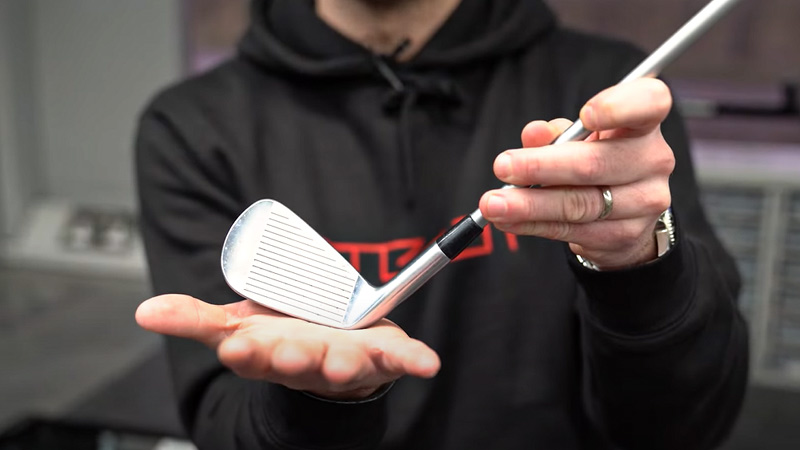
Understanding the lie angle in golf is important because it can significantly impact your shots and the accuracy of your game.
The lie angle of a golf club refers to the angle formed between the sole of the clubhead and the shaft when the club is in a static, addressed position. Here are key points to understand about lie angle:
Effects on Ball Flight
- Upright Lie Angle: When a club has an upright lie angle (more vertical), it tends to promote a draw. This means the ball typically curves from right to left (for a right-handed golfer).
- Flat Lie Angle: A flat lie angle (more horizontal) can promote a fade, causing the ball to curve from left to right (for a right-handed golfer). Golfers who hook the ball might benefit from flatter lie angles.
Impact on Ball Striking
The lie angle also affects how the clubhead interacts with the ground and the golf ball. If the lie angle is incorrect for your swing, it can lead to inconsistent contact, often resulting in thin or fat shots.
Fitting Process
To determine the appropriate lie angle for a golfer, a club fitting process is essential. This involves assessing the golfer’s posture, swing mechanics, and body dimensions.
Customization
When purchasing new golf clubs, you can often specify the lie angle that suits your game. Golf club manufacturers provide custom options, and professional club fitters can assist with this process.
Lie Angle Adjustment
Existing clubs can be adjusted to achieve the desired lie angle. This is done by bending the hosel (the part of the clubhead that attaches to the shaft). However, it should be performed by a professional club fitter or technician.
Iron vs. Wood Lie Angles
Irons and woods can have different lie angles. Irons are typically more upright to help with ball-striking consistency, while woods may have a flatter lie angle.
Checking Lie Angle
You can check the lie angle of your clubs using a lie angle board or lie angle tape during a fitting or at your local golf shop.
Remember that while lie angle is important, it is just one component of club fitting. Loft, shaft length, shaft flex, grip size, and other factors also play a significant role in optimizing your golf clubs to match your swing and physique.
To get the most out of your golf game, consider consulting with a professional club fitter who can provide a personalized assessment and recommendations.
What Does 1 Degree Upright Mean in Golf?
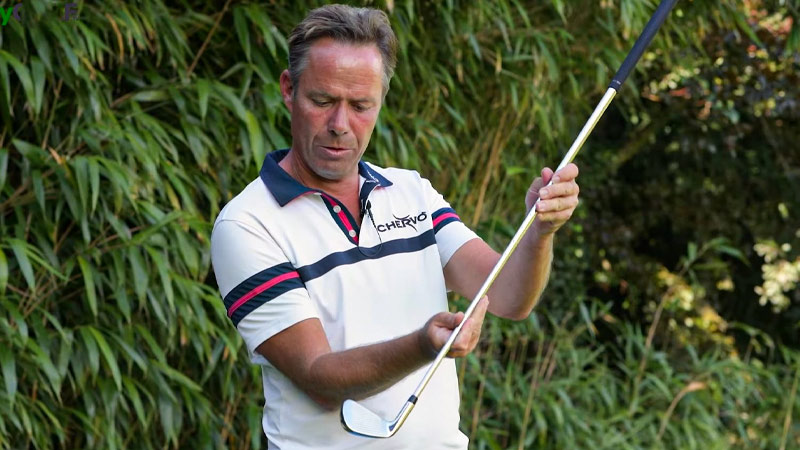
In golf, when you refer to a club being “1 degree upright,” you’re talking about the lie angle of the clubhead. Specifically, it means that the clubhead’s lie angle is 1 degree more upright than the standard lie angle for that type of club.
Here’s what this means for your golf club:
Upright Lie Angle
An upright lie angle means that the club head is tilted more vertically when the club is at the address position (the position you take when you’re ready to hit the ball).
The sole of the clubhead makes contact with the ground at a steeper angle compared to a club with a standard or flatter lie angle.
Effects on Ball Flight
An iron or club with a lie angle that is 1 degree more upright can promote a draw, which is a shot that curves from right to left for a right-handed golfer.
This is because the more upright lie angle encourages the clubface to close slightly at impact.
Club Fitting
It’s important to have your clubs properly fitted to your individual swing characteristics and physical dimensions.
A 1-degree upright club may be recommended by a club fitter if it suits your swing and helps improve your ball striking and shot shape.
Customization
Many golf club manufacturers offer customization options for lie angle when you purchase new clubs. You can specify the desired lie angle based on your fitting.
Lie Angle Adjustment
Existing clubs can be adjusted to be 1 degree upright or any other specific angle by bending the hosel of the club. This should be done by a professional club fitter or technician to ensure the club is properly adjusted.
It’s essential to remember that lie angle is just one of several club specifications that can affect your golf game.
Other factors like loft, shaft length, shaft flex, and grip size also play a role in optimizing your clubs to match your swing. Properly fitted clubs can help you achieve more consistent ball striking and better shot shape.
How to Determine Your Ideal Upright Lie Angle Irons
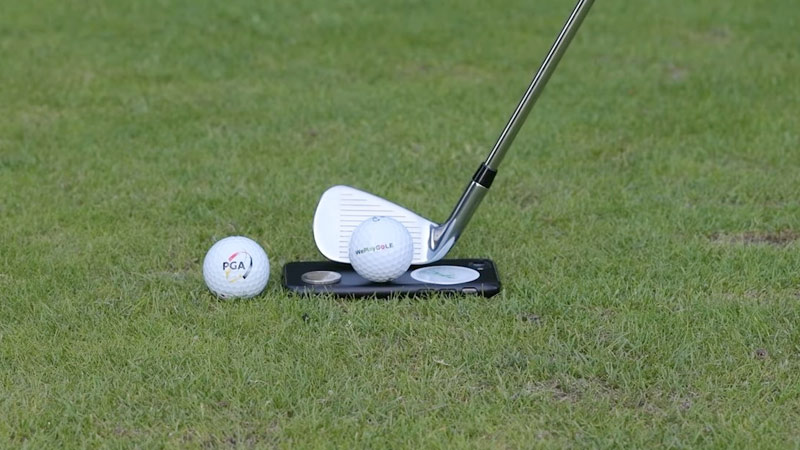
Determining your ideal upright lie angle for irons is an important part of club fitting to ensure your clubs match your swing mechanics and physical dimensions.
Here are the steps to help you determine your ideal upright lie angle for irons:
Get a Professional Club Fitting
The best way to determine your ideal upright lie angle is to schedule a club fitting session with a professional club fitter.
They have the expertise, equipment, and knowledge to accurately assess your swing and recommend the appropriate lie angle.
Find a Qualified Club Fitter
Look for a reputable club fitting facility or golf shop with certified club fitters. They should have the necessary tools, such as a lie angle board or lie angle tape, to measure your lie angle accurately.
Assess Your Swing
During the fitting, you’ll hit shots on an impact board or lie angle board. The board has a special tape that leaves marks on the sole of the club after impact.
The club fitter will use these marks to determine your impact pattern and the corresponding lie angle adjustments needed.
Analyze the Impact of Marks
Based on the impact marks on the sole of the club, the club fitter will identify whether you consistently hit the ball closer to the heel or toe of the club, and if the marks show the ball is consistently pushed or pulled off target.
Adjust Lie Angle
The club fitter will make the necessary lie angle adjustments by bending the hosel of the club to accommodate your impact pattern and promote more centered ball strikes.
Test the Adjusted Clubs
After the lie angle adjustments are made, you’ll hit more shots with the adjusted clubs to confirm that your ball striking and shot shape have improved.
Fine-Tune Loft and Other Specifications
In addition to lie angle, the club fitter may recommend adjusting other club specifications, such as loft, shaft length, and grip size, to further enhance your performance.
Review the Results
The club fitter will discuss the results with you, explaining how the lie angle adjustment will affect your ball’s flight and accuracy.
Record Your Specifications
Once the ideal lie angle is determined, make sure to record this information for future reference.
The lie angle is usually measured in degrees, and the adjustment might be labeled as “upright” or “flat” relative to the standard lie angle.
Consider Custom Clubs
If you’re in the market for new clubs, work with the club fitter to order custom clubs with the specific lie angle adjustments that were recommended during the fitting.
Remember that a properly fitted club can make a significant difference in your golf game. It can help you achieve more consistent ball striking, reduce shot dispersion, and improve your overall performance on the course.
FAQs
What is 1 degree upright irons meaning?
A 1-degree upright iron means that the lie angle of the iron clubhead is 1 degree more vertical than the standard lie angle for that type of club. It can promote a draw ball flight and help counteract a slice.
What is the upright loft on the driver?
“Upright loft” is not a standard golf term. The loft of a driver refers to the angle of the clubface. An upright lie angle is relevant to irons, not loft.
Are 1-degree upright irons Good?
Whether 1-degree upright irons are “good” depends on the golfer’s swing and shot tendencies. For those who need to reduce a slice or promote a draw, they can be beneficial. Proper fitting is crucial to determine their suitability.
How is the lie angle adjusted on irons or wedges?
Lie angle adjustments are typically made by bending the hosel (the part of the clubhead that attaches to the shaft). This process should be performed by a professional club fitter or technician with specialized equipment.
What effect does lie angle have on ball flight with irons?
The lie angle influences ball flight. An upright lie angle tends to promote a draw (right-to-left for right-handed golfers), while a flatter lie angle can promote a fade (left-to-right for right-handed golfers).
Wrapping Up
In the world of golf, precision and consistency are key to success. Understanding the intricacies of an upright golf club, specifically the lie angle, is one step closer to achieving a better game.
We’ve unraveled the mysteries behind this fundamental aspect of club customization in this blog post.
By comprehending what an upright golf club means and how it influences your shots, you’ll be better equipped to optimize your golf clubs for your swing and body characteristics.
The right lie angle can promote desired shot shapes and enhance ball-striking consistency.
It’s not just about terminology; it’s about improving your performance on the fairways and greens. Remember, the right equipment can make a world of difference in your golf game, and the lie angle is a critical piece of that puzzle.

